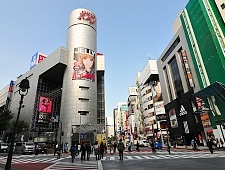Notes on Yuniya Kawamura's "Japanese Street Fashion: The Urge To Be Seen and To Be Heard"
Dr. Yuniya Kawamura is an Assistant Professor of Sociology at the Fashion Institute of Technology. She attended Bunka Fashion College, Japan's primary fashion school then went on to study pattern-making technology at FIT. She continued her education in the field of sociology to get formal training in fashion writing. She has a PhD from Columbia University and wrote her dissertation on Japanese designers in the French fashion industry. In 2004, she published the book The Japanese Revolution in Paris Fashion from which her article "Japanese Street Fashion: The Urge To Be Seen and To Be Heard" comes. The article takes a sociological and theoretical approach in discussing the relationship between the production and consumption of fashion.
She states that fashion emerges out of youth culture that is then commercialized by the industry into being "fashion" and that the youth culture, then, both consumes and produces fashion. Japan's economic recession that started in the 1990s resulted in an uncertainty and disillusionment with society that caused an ideological shift and the resulting breakdown of traditional family and societal values. Under this social and economic environment, Japanese street fashion became more creative and innovative as teens looked for more ways to rebel against traditional values and to challenge and redefine the notion of "fashion."

Shibuya 109 Department Store in Tokyo
Kawamura discusses the different subcultures of Japanese street fashion, using Dick Hebidge's definition for the term, noting that those in subcultures gain pleasure in feeling like they are being scrutinized and watched. The Ganguro is one such subculture that emerged in the mid-1990s. The word literally means face-black, or blackface, and those who wear these fashions dye their hair blonde or orange and have heavily tanned skin, intense makeup, and bright miniskirts or short pants and platform heel boots.

Ganguro subculture
Yamamba
The Gothic Lolita subculture has been one of the more popular fashion looks in the Harajuku Station area in Tokyo since 1999, when it emerged as a counter-reaction to the Ganguro style. The subculture can continue to be further divided with distinctive elements to the styles.
Gothic Lolita Punk Gothic Lolita
http://www.youtube.com/watch?v=DoYY-rAcgzs&feature=related
(Lolita fashion show in the Netherlands)
The distinctive looks constitute an externally visible group identity and a shared sign of affiliation. They communicate group ideas, intentions, and thoughts, but they are only functional when within specific locations. The styles portray a symbolic subcultural identity that is societally based, rather than politically or ideologically so. Kawamura concludes her piece by expressing that fashion is a collective activity that stems from the social relationships found in a subculture of shared norms and values. Their expression of such ideologies through clothing and fashion helps guide the professional designers to upcoming trends, demonstrating the symbiotic relationship between producers and consumers of fashion. The article remains relevant today with our increased global consciousness and appropriation of other cultures. In addition, high end brands that take this look, like Comme de Garcons, represent that shift from consumer to producer and from street fashion to high fashion.







You have very good information about Japanese fashion, if you want to know something about men's fashion, Kidoriman Review is one of the famous Japanese style outfits provider. Must visit us!!
ReplyDeleteMeanwhile newer companies such as Vokal have expanded the urban clothing label to include high end velour, fleece loungewear, denim, and vividly colored athletic jerseys. Another company, Baby Phat aims at creating a blend of hip hop style with more sophisticated metropolitan fashion to create a refined urban look. street fashion
ReplyDeleteClothing that makes a positive street fashion statement, Join the movement today!
ReplyDelete